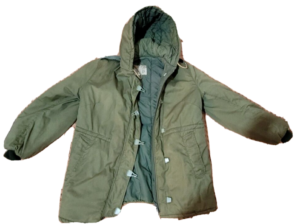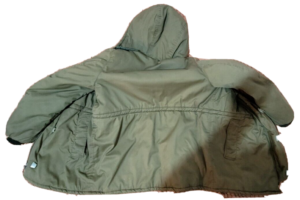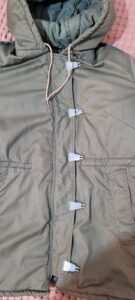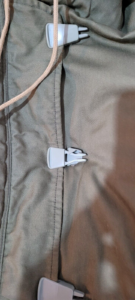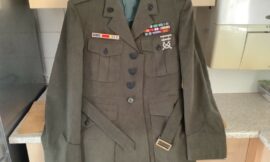The Israeli Doobon Coat, also known as the Dubon, is a distinctive piece of military apparel that has become iconic within the Israeli Defense Forces (IDF) and among civilians. This coat, which serves as both a practical and symbolic garment, has a rich history intertwined with Israel’s military and social evolution.
Origins and Design
The Doobon Coat’s origins trace back to the 1950s when the IDF sought a durable, warm, and versatile piece of outerwear suitable for the diverse climatic conditions soldiers faced. The term “Doobon” is derived from the Hebrew word for bear, alluding to the coat’s ability to provide warmth and protection in cold environments. The design was heavily influenced by practicality and necessity, characteristic of military apparel.
The coat is typically made of heavy-duty cotton or a blend of synthetic fibers, making it robust and weather-resistant. It features a quilted lining for added warmth, multiple pockets for functionality, and a distinctive hood that can be rolled up and fastened when not in use. The coat is usually olive drab or khaki, aligning with the standard military color schemes that provide camouflage and a unified appearance.
Functional Features
One of the Doobon Coat’s key attributes is its adaptability. The quilted lining can often be removed, allowing the coat to be worn in varying temperatures. This modularity ensures that soldiers remain comfortable whether they are stationed in the chilly highlands or the temperate coastal regions of Israel. The ample pockets are strategically placed to allow easy access to essential items, such as ammunition, maps, and other gear, without hindering movement.
The hood, an integral feature, provides protection against wind and rain. It can be adjusted or removed, depending on the weather conditions, offering flexibility. The coat’s length, generally extending to mid-thigh, provides additional coverage and warmth without restricting mobility, crucial for soldiers on the move.
Cultural Significance
Beyond its practical applications, the Doobon Coat has become a cultural icon in Israel. Its widespread use by the IDF has cemented it as a symbol of resilience and defense. The coat is often associated with the image of the Israeli soldier, embodying the nation’s military ethos and the personal experiences of countless individuals who have served in the armed forces.
Over the years, the Doobon Coat has transcended its military roots to become popular among civilians. It is not uncommon to see the coat worn by people in various walks of life, particularly during the colder months. This civilian adoption underscores the coat’s practical design and enduring appeal.
Modern Variations and Legacy
The Doobon Coat has undergone several updates since its inception. Advances in fabric technology and changing operational requirements have influenced these modifications. Modern versions may incorporate lighter, more breathable materials while retaining the original’s functional aspects.
Despite these changes, the core design principles of the Doobon Coat remain intact. It continues to serve as a testament to the ingenuity and resourcefulness of military apparel designers, reflecting a balance between utility and comfort. The coat’s legacy is evident in its continued use and its place in the collective memory of Israeli society.
Conclusion
The Israeli Doobon Coat represents more than just a piece of military gear; it is a symbol of adaptability, resilience, and national identity. Its practical design has ensured its longevity and widespread use, while its cultural significance has embedded it deeply in the Israeli consciousness. As both a historical artifact and a contemporary garment, the Doobon Coat stands as a unique blend of form and function, emblematic of the enduring spirit of the Israeli people and their defense forces.
